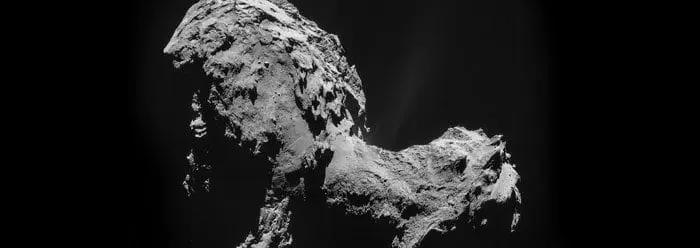by Brian Thomas, M.S.
In the year 2014, at least a half dozen fascinating observations confirmed the recent creation of our world and universe. For example, researchers took a closer look at Saturn’s moon Enceladus, finding that it has more than just the single known geyser spewing icy material into space—it has 101 active geysers.1 How could this tiny moon still have enough internal heat to supply these plumes if it formed billions of years ago?
One of the year’s most notable overall achievements, not just within the sciences, occurred when the European Space Agency successfully landed a probe on comet 67P/Churyumov–Gerasimenko. But when there, the Rosetta spacecraft detected jets of material ushering from the giant space rock’s surface.2 How it could possibly still have this material, let alone the energy left to keep pushing it out, remains a stumbling block for those who believe that comets formed billions of years ago.
This same comet mystery extended far from our own Solar System when astronomers detailed a distant star system and found evidence of 493 still-orbiting comets.3 It makes sense to see distant comets gradually disintegrating to dust after only having begun their orbits thousands of years ago, but shouldn’t those distant comets have completely vaporized after millions of years? …Continue reading.






